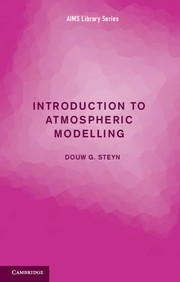Refine search
Actions for selected content:
6993 results in Mathematical modeling and methods
3 - Green’s Functions in Elastic Isotropic Full and Bimaterial Planes
-
- Book:
- Static Green's Functions in Anisotropic Media
- Published online:
- 05 May 2015
- Print publication:
- 30 April 2015, pp 57-110
-
- Chapter
- Export citation
Contents
-
- Book:
- Static Green's Functions in Anisotropic Media
- Published online:
- 05 May 2015
- Print publication:
- 30 April 2015, pp vii-xiv
-
- Chapter
- Export citation
Static Green’s Functions in Anisotropic Media - Half title page
-
- Book:
- Static Green's Functions in Anisotropic Media
- Published online:
- 05 May 2015
- Print publication:
- 30 April 2015, pp i-ii
-
- Chapter
- Export citation
Acknowledgments
-
- Book:
- Static Green's Functions in Anisotropic Media
- Published online:
- 05 May 2015
- Print publication:
- 30 April 2015, pp xvii-xviii
-
- Chapter
- Export citation
8 - Green’s Functions in an Anisotropic Magnetoelectroelastic Full-Space
-
- Book:
- Static Green's Functions in Anisotropic Media
- Published online:
- 05 May 2015
- Print publication:
- 30 April 2015, pp 260-292
-
- Chapter
- Export citation
5 - Green’s Functions in Elastic Isotropic Full and Bimaterial Spaces
-
- Book:
- Static Green's Functions in Anisotropic Media
- Published online:
- 05 May 2015
- Print publication:
- 30 April 2015, pp 140-175
-
- Chapter
- Export citation
Copyright page
-
- Book:
- Static Green's Functions in Anisotropic Media
- Published online:
- 05 May 2015
- Print publication:
- 30 April 2015, pp iv-iv
-
- Chapter
- Export citation
Index
-
- Book:
- Static Green's Functions in Anisotropic Media
- Published online:
- 05 May 2015
- Print publication:
- 30 April 2015, pp 328-337
-
- Chapter
- Export citation
ANZ VOLUME 56 ISSUE 3 COVER AND FRONT MATTER
-
- Journal:
- The ANZIAM Journal / Volume 56 / Issue 3 / January 2015
- Published online by Cambridge University Press:
- 10 April 2015, pp. f1-f2
-
- Article
-
- You have access
- Export citation
ANZ VOLUME 56 ISSUE 3 COVER AND BACK MATTER
-
- Journal:
- The ANZIAM Journal / Volume 56 / Issue 3 / January 2015
- Published online by Cambridge University Press:
- 10 April 2015, pp. b1-b7
-
- Article
-
- You have access
- Export citation

Introduction to Atmospheric Modelling
-
- Published online:
- 05 April 2015
- Print publication:
- 02 April 2015
Prologue
-
- Book:
- Introduction to Atmospheric Modelling
- Published online:
- 05 April 2015
- Print publication:
- 02 April 2015, pp vii-x
-
- Chapter
- Export citation
Index
-
- Book:
- Introduction to Atmospheric Modelling
- Published online:
- 05 April 2015
- Print publication:
- 02 April 2015, pp 102-106
-
- Chapter
- Export citation
Epilogue
-
- Book:
- Introduction to Atmospheric Modelling
- Published online:
- 05 April 2015
- Print publication:
- 02 April 2015, pp 94-95
-
- Chapter
- Export citation
2 - Scale analysis of the governing equations
-
- Book:
- Introduction to Atmospheric Modelling
- Published online:
- 05 April 2015
- Print publication:
- 02 April 2015, pp 25-36
-
- Chapter
- Export citation
Contents
-
- Book:
- Introduction to Atmospheric Modelling
- Published online:
- 05 April 2015
- Print publication:
- 02 April 2015, pp v-vi
-
- Chapter
- Export citation
4 - Large scale dynamics
-
- Book:
- Introduction to Atmospheric Modelling
- Published online:
- 05 April 2015
- Print publication:
- 02 April 2015, pp 69-82
-
- Chapter
- Export citation
3 - Small scale dynamics
-
- Book:
- Introduction to Atmospheric Modelling
- Published online:
- 05 April 2015
- Print publication:
- 02 April 2015, pp 37-68
-
- Chapter
- Export citation
Appendix A - Dimensional analysis and scales
-
- Book:
- Introduction to Atmospheric Modelling
- Published online:
- 05 April 2015
- Print publication:
- 02 April 2015, pp 96-99
-
- Chapter
- Export citation
5 - Waves in the atmosphere
-
- Book:
- Introduction to Atmospheric Modelling
- Published online:
- 05 April 2015
- Print publication:
- 02 April 2015, pp 83-93
-
- Chapter
- Export citation
